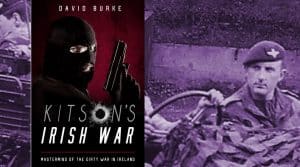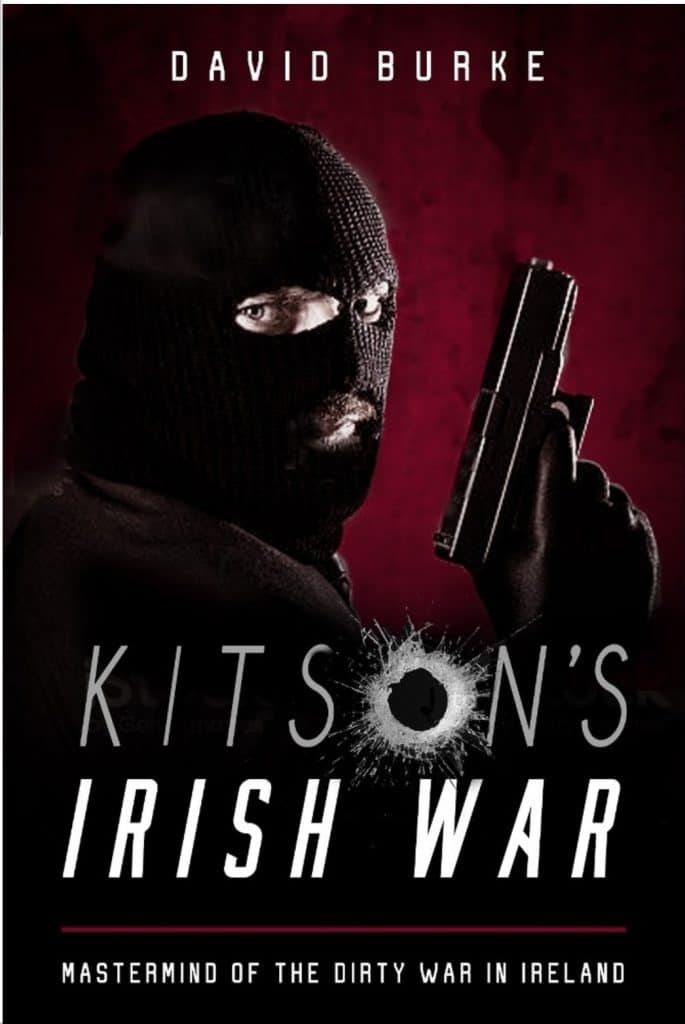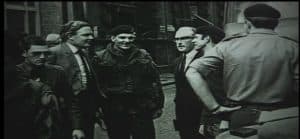By Colin Wallace.
1. Memories of Brigadier Frank Kitson.
David Burke’s fascinating new book on Frank Kitson includes a comprehensive analysis of what has become known around the world as ‘Bloody Sunday’. Reading it has stirred a lot of memories of the time I spent at Army HQ in Northern Ireland during the 1970s. As the new book reveals, Brigadier Kitson sometimes used me as a sounding board while we were both based at Thiepval Barracks, Lisburn. I remember him well coming to my office where he sat in a red armchair. Unlike other senior officers, he never once called me to his office, which was on the other side of the complex. Intriguingly, he never spelt out to me precisely what had triggered the questions he put to me.
The book also describes how the brigadier – as he was then – was encouraged by the Ministry of Defence to sue a British newspaper, The Daily Mirror. It had erroneously claimed Brigadier Kitson had developed the five techniques which had been deployed against internees while he had served in Kenya. The ploy, as Burke describes, was designed to dampen the confidence of the media who were attacking the Army over those interrogation methods.
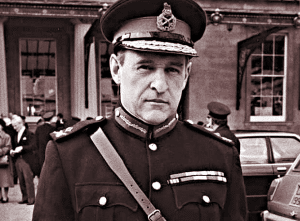
Inevitably, with the passage of time, many of those distant memories have now morphed into a collage of blurred images, but some remain painfully in focus because of their emotional impact upon me at the time. ‘Bloody Sunday’ is one of those. Burke’s book covers a lot of ground including a lengthy section on the Bogside tragedy. He demonstrates that despite two major inquiries into the event, new information is still surfacing some 50 years after it. I believe his book makes an important contribution to the overall debate about what has become one of the most controversial and divisive episodes of that traumatic period.
He demonstrates that despite two major inquiries into the event, new information is still surfacing some 50 years after it. I believe his book makes an important contribution to the overall debate about what has become one of the most controversial and divisive episodes of that traumatic period.
2. The Ministry of Defence (MoD) attempted to mislead the media about my role in Widgery.

The complexity of the events surrounding ‘Bloody Sunday’ is well illustrated by the fact the initial Widgery Inquiry lasted 24 days and heard evidence from 114 witnesses. The subsequent Saville Inquiry lasted five years and heard evidence from 922 witnesses. It became the longest inquiry in British legal history! Why did the additional 800 witnesses not appear at the Widgery Inquiry when their memories of the event were more likely to be fresh and, therefore, potentially more accurate?
At the time of ‘Bloody Sunday’, I was part of the Army’s Psychological Operations (Psy Ops) unit. My role was gathering and disseminating intelligence information in ways to assist the work of the Security Forces. The work was sensitive and totally deniable. In 1990, the MoD approached a number of journalists in an attempt to mislead the public about my role in Widgery Inquiry. That was a pointless attempted cover-up because my role at Widgery had little, if anything, to do with Psy Ops. However, MoD documents disclosed by the Government make it clear that, on 11 February 1972, I took over responsibility from Colonel Tugwell, the officer then in charge of Psy Ops in Northern Ireland, for what was known as ‘The Opposition Case’. Another document compiled at the end of the Widgery Inquiry by the Deputy Director of the Army Legal Services, Lt Colonel Colin Overbury, stated that I: “provided detailed background information (to the Army counsel) throughout the hearing“. The Army legal Team also included two very experienced members of the Royal Military Police Special Investigation Branch who undertook ongoing research.

It is now clear that some Government witnesses lied to the Saville Inquiry by falsely claiming that the Army had stopped using Psy Ops before ‘Bloody Sunday’ took place. Why was that deception necessary and why was no action taken against those who committed perjury? That failure tends to indicate that those witnesses were doing what was required of them by those in authority.
Why was that deception necessary and why was no action taken against those who committed perjury? That failure tends to indicate that those witnesses were doing what was required of them by those in authority.
3. An IRA ambush of a ‘distant cousin to the Queen’ during the Widgery tribunal was ‘quietly covered up’
One of my colleagues on the Army legal team was Major Henry Hugh-Smith of the Blues and Royals. He was the team’s secretary and brought great energy and humour to his role. He was described in Peerage News as “a distant cousin to the Queen”.
All the members of Army team including the barristers stayed with the 2nd Battalion Royal Green Jackets, at Ballykelly, which is about half way between Derry and Coleraine where the Widgery Tribunal was being held. On the night before the final hearing, the Green Jackets invited Hugh and me to join one of their mobile patrols into the Bogside to see at first hand some of the locations featured in the Inquiry. The lead Land Rover in which Henry was travelling was ambushed by the IRA. An official account in Guards Magazine of what happened records that in the attack: “lasted eight minutes with some 600 rounds exchanged“. It was believed that the IRA were using a variety of weapons in the ambush, including an American M60 machine-gun. It is amazing that Army casualties were not higher.
Two members of the IRA were killed in the ambush and Henry was shot in the right arm. His hand was subsequently amputated above the wrist. I went to visit him early the following morning – the final day of the Inquiry – at Altnagelvin Hospital on the outskirts of Derry. He was still very ill and heavily sedated.
Two members of the IRA were killed in the ambush and Henry was shot in the right arm. His hand was subsequently amputated above the wrist. I went to visit him early the following morning – the final day of the Inquiry – at Altnagelvin Hospital on the outskirts of Derry. He was still very ill and heavily sedated.
The incident was quietly covered up and the Inquiry remained unaware of what happened. Fortunately, Henry made a good recovery. Despite his injury, he later became Equerry to HRH Prince Philip and also Commanding officer of his Regiment.

In the 1980s, Paul Foot was engaged in writing a book about my own story. On one occasion he and his young son travelled to the West Country by train to visit his father, Lord Caradon, who was a former Governor of Jamaica and the Permanent Representative of the United Kingdom to the United Nations. On the return journey, the train stopped at a station and a male passenger entered the carriage where Paul and his son we seated. Paul’s son noticed that the man had a metal hook instead of a right hand. Paul apologised to the passenger because the boy was staring at the hook and he asked the passenger what had happened to his hand . The passenger told him that he had been wounded while serving with the Army in Northern Ireland. Paul then told him that he was writing a book about someone who had been with the Army in Northern Ireland. Yes, the passenger was Henry Hugh-Smith!
All three of us later met up for lunch in London and we recounted our experiences of the Widgery Inquiry. Henry recalled how, in an attempt to be ‘neutral’ the local authority in Coleraine had decided that the Army should not have any office accommodation in the building where the Inquiry was being held. As a result, the Army legal team had to use mobile office trucks in the adjoining grounds. One of the mobile offices was for the Army clerks and one was for the lawyers, plus Henry and myself. Lunch was brought in each day from Ballykelly and served in the mobile office used by the lawyers. During one lunchbreak, the NCO in charge of the clerks decided to give his team a lesson in using the Browning 9mm pistol. Unfortunately, one of the clerks accidentally discharge his pistol and the bullet zipped through the side of the mobile office where we were all having lunch. Minutes later we were surrounded by heavily armed members of the RUC as the senior legal figures emerged from under the lunch tables where they had taken refuge. Luckily, no one was injured. Henry thought it was highly amusing that, although he had served in N Ireland with his Regiment, the only occasions he came under fire were during the Widgery Tribunal – once by the IRA and once by the British Army!
Sadly, Henry died of natural causes on 1 December 2016. He was a great officer and a remarkable individual.
4. General Sir Harry Tuzo’s opposition to internment.
A preliminary hearing for the Widgery Tribunal took place on 14th February 1972 and the main hearings ran from 21st February 1972 to 14th March 1972. Looking back on those days at the Tribunal, there is now little doubt in my mind that the origins of ‘Bloody Sunday’ can largely be traced to the Government’s badly thought out, and politically expedient, policy on internment. When that policy was proposed initially, it was strongly opposed by the Army, particularly by General Sir Harry Tuzo.

As General Tuzo correctly predicted, internment did become a recruiting agent for the IRA and it was also presented as ‘justification’ for subsequent violence. Another outcome, was the not unexpected proliferation of civil rights marches protesting, not only about internment per se, but also at the obvious one-sided nature of that policy. The Northern Ireland Prime Minister had pressurised Edward Heath into excluding Loyalist paramilitaries from internment.
5. The storm clouds gather
The storm clouds that were gathering as a prelude to ‘Bloody Sunday’ became very evident a week before ‘Bloody Sunday’ when members of the Parachute Regiment were ordered to block a protest march en route to the Internment Holding Centre at Magilligan, about 25 miles from Derry. TV footage of that event showed members of the Parachute Regiment apparently fighting with demonstrators attempting to protest on what was claimed to be MoD owned land. Whether the TV footage of that incident was an accurate portrayal of what happened is irrelevant. What really mattered was how the incident was perceived very differently by the protestors and by the members of the Parachute Regiment that evening when they returned to their barracks in Belfast.

That TV coverage, plus the knowledge of another pending civil rights demonstration the following Sunday, made the Derry business owners fearful of what might occur. They expressed their concerns to the Stormont Government who, in turn, made the Army aware of the need to manage the march effectively. I believe the fears expressed to Stormont by the business owners in the City had a significant effect in that General Tuzo’s deputy, Major General Ford, made it clear to the Army in Derry (8 Brigade) that the Civil Rights march should not be allowed to get to the businesses in the city centre and was to be contained in the Bogside. That decision became a key factor in what happened later. The chessboard was set for confrontation.
In the days leading up to the march, there were numerous rumours in circulation which further increased tensions in Derry. Some of those rumours referred to a possible counter demonstration by Loyalists. Others claimed that the IRA from the Creggan were going to go into the Bogside, and others claimed that US Navy personnel stationed in Derry were giving arms training to the IRA.
6. ‘Reliable information possessed by the Psy Ops unit indicated that the IRA would not use the Civil Rights as opportunity to attack the Army’.
Despite the rising tensions, reliable information possessed by the Psy Ops unit indicated that the IRA would not use the Civil Rights as opportunity to attack the Army. That assurance did not, however, include attacks on troops by stone-throwing youths. The threat level was sufficiently low that I was asked to encourage the press to cover the march. Although I did not explain to the press why they should cover the march, the fact was that the Army wanted to demonstrate the arrest of a large number of the ‘hooligan element’. Whether or not the Army’s plan for positive press coverage from the event was conveyed to the officers of the Parachute Regiment is less clear. I suspect that it was not.
7. Hugh Mooney of the IRD misled the media
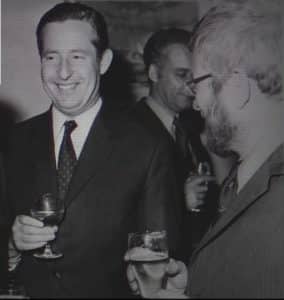
Another major flaw was the way in which Army HQ N Ireland dealt with the press on that occasion. Normally, the release of official statements to the press was handled by the Chief Information Officer, Tony Staughton. On the evening after the Civil Rights March, a senior official from the Information Research Department of the Foreign Office, Hugh Mooney, took control of TV interviews with Army personnel, much to Tony Staughton’s annoyance. That should not have happened. Mooney later briefed Colonel Tugwell for an interview with BBC TV. During that interview, Colonel Tugwell incorrectly claimed that four of those shot dead were on the Army’s wanted list. Where Colonel Tugwell got that information from is still unclear. However, when I checked the allegation with 8 Brigade the following morning I was told that it was totally incorrect. Whatever the reason for the false information being given to the BBC, it was particularly harmful to the Army when the true facts had to be disclosed. Colonel Tugwell later apologised to the Saville Inquiry for his error. The still unanswered question is: who gave Colonel Tugwell the false information? He did not just make it up!
Whatever the reason for the false information being given to the BBC, it was particularly harmful to the Army when the true facts had to be disclosed. Colonel Tugwell later apologised to the Saville Inquiry for his error. The still unanswered question is: who gave Colonel Tugwell the false information? He did not just make it up!
8. The Widgery tribunal did not settle the Bloody Sunday issue.
When the Widgery Inquiry finally completed its work, Colonel Colin Overbury and I delivered a number of presentations to groups of Army officers on the evidence given by witnesses. A very prominent feature of the Widgery Inquiry had been a scale model of the Bogside and adjoining areas. The model was created by the Royal Air Force Model Unit in Germany. We used that model during our presentations to help clarify some of the evidence given by witnesses.
At the end of those presentations, Colonel Overbury and I felt very relieved that the matter was ‘finally’ at an end. Little did I suspect that some 30 years later I would be required to give evidence to the Saville Inquiry. That is another story!
8. “This is why the so-called ‘legacy cases’ need to be dealt with satisfactorily.”
‘The Troubles’ is a grossly understated term that hides the harsh reality that during those years more than 3,500 people were killed, of whom 52% were civilians, 32% were members of the security forces and 16% were members of paramilitary groups. Those bland statistics totally fail to convey the real sense of pain caused, not only by each physical death, but also by the circumstances in which the person died. Five of my close Army colleagues were killed during my time in Northern Ireland. In some respects, they were almost like extended members of my own family and I still feel an emotional tug every time I recall what happened to each them. This is why the so-called ‘legacy cases’ need to be dealt with satisfactorily.
One of the most important comments I recall from my very early military training is: “There are no good or bad regiments, only good and bad officers”. This means that in any Army formation, large or small, all responsibility for success or failure, including the behaviour of the troops, ultimately rests with the leader. ‘Leader’ can mean any rank from Lance Corporal to a Field Marshal. In my own experience, most of the Army leaders I experienced in Northern Ireland were excellent, but problems did arise when they were subjected to questionable political pressures. I fully accept, however, that that is the democratic process and is a price worth paying!
OTHER STORIES ABOUT BLOODY SUNDAY, THE BALLYMURPHY MASSACRE, BRIGADIER FRANK KITSON AND COLONEL DEREK WILFORD ON THIS WEBSITE:
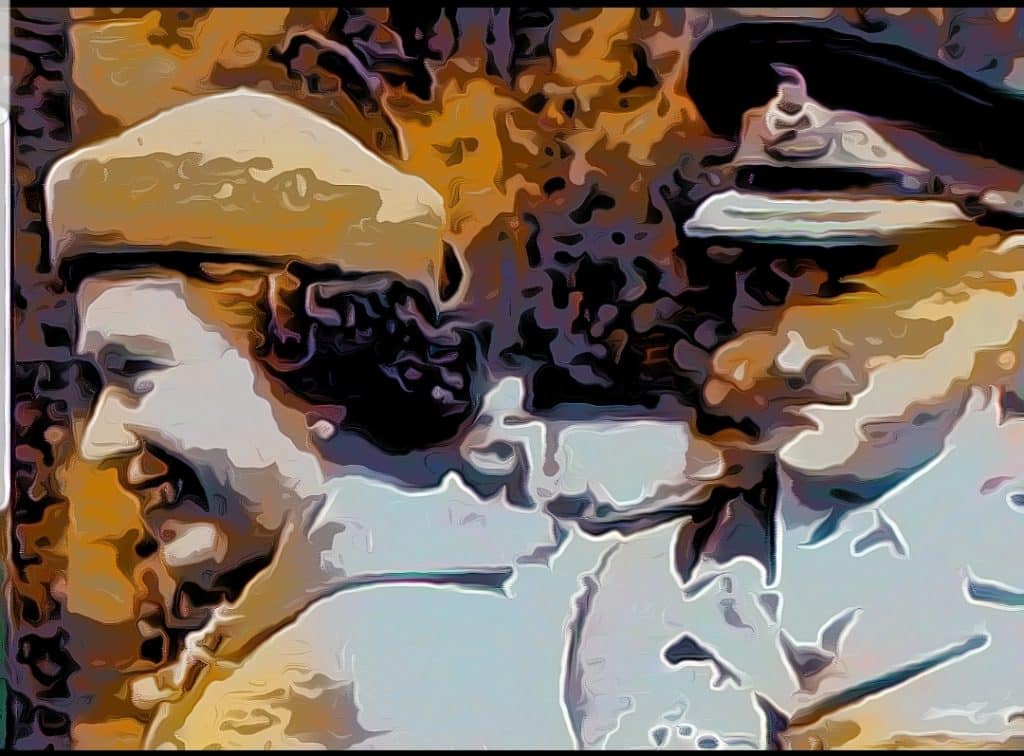
A Foul Unfinished Business. The shortcomings of, and plots against, Saville’s Bloody Sunday Inquiry.
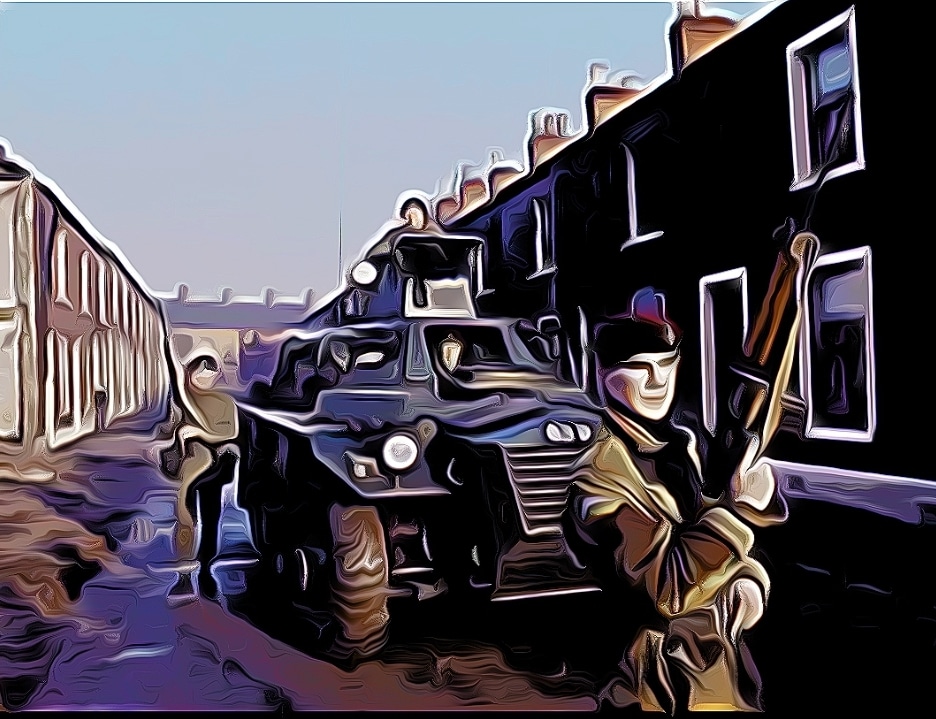

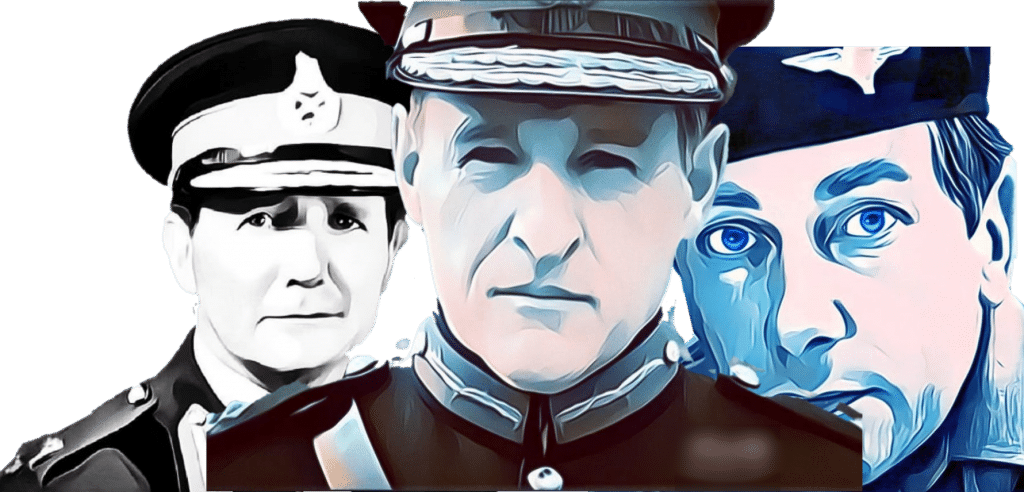
Soldier F, the heartless Bloody Sunday killer, is named.
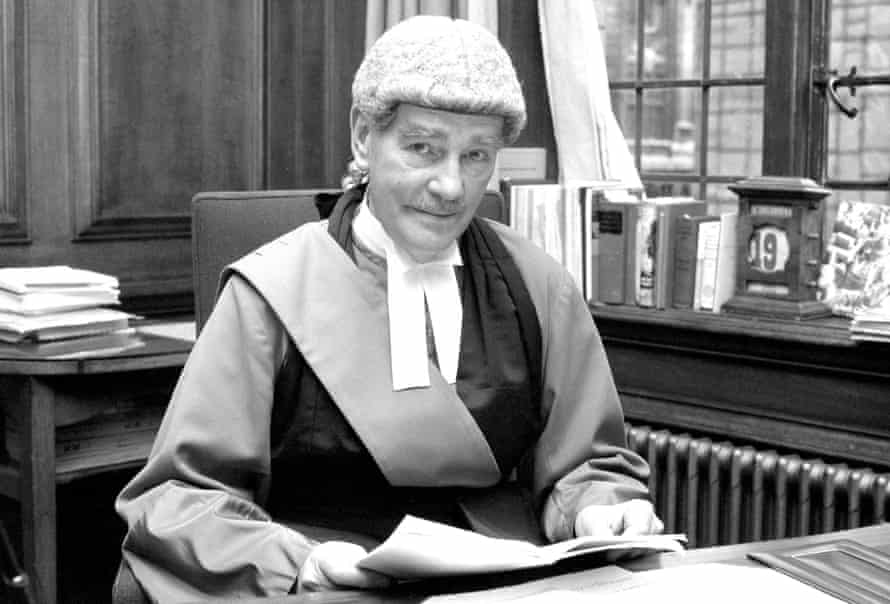
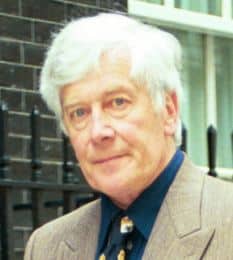

Brigadier Kitson’s motive for murdering unarmed civilians in Ballymurphy.
